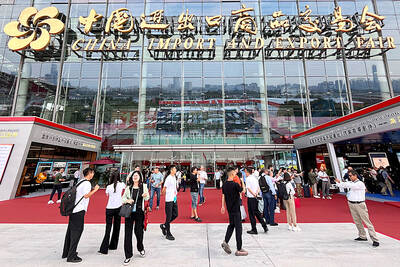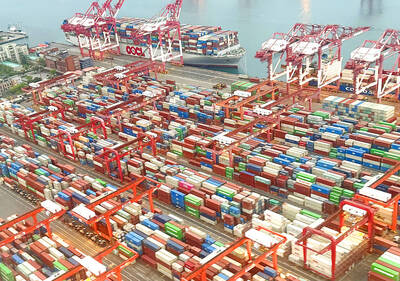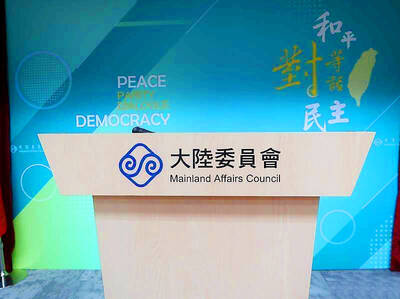Crates of car parts, truck tires, bags of fish meal and chemical containers are piling up at China's largest freight marshalling yard with no rail wagons to take them anywhere.
Development of the railway in the world's most populous nation has failed to keep pace with the roaring economy and what cargo space is available is going first to what helps fuel that economic growth -- coal.
"Power is running short. Coal is in urgent demand," said Xie Youqiao, deputy director of the National Development and Reform Commission, China's main economic planning body.
"The satisfaction rate [for cargo transport] has dropped to 35 percent from about 60 percent last year."
The sprawling Zhengzhou East station in the central province of Henan, built in 1997, reveals the extent of the problems.
Next to the container terminals in the goods car section, workers rely on tiny, hand-written tags to separate bags of jute, sacks of herbs, metal pipes in straw and bicycles for shipping to the right destinations.
The central government has also put priority on the transport of grains and fertilizers, meaning that a lot of everything else, including steel, gets left behind at stations or ports.
Things have gone from bad to worse in recent weeks after Beijing tightened load controls on road trucks which used to carry two or three times their legal limits.
It has also tried to speed passenger train rail traffic, which has added to the confusion.
"There's just not enough rail capacity," Zhu Yadong, an official at Zhengzhou East station, said.
"We don't want goods being stored here, but some cargoes get stuck ... We are already working around the clock."
grinding to a halt
Some steel mills and aluminum and copper producers have been forced to wind down production as raw materials have not arrived in time. Grain prices have surged in some provinces as shipments have been delayed.
At the Zhengzhou East station, where four major rail lines converge, 2,100 workers are wrestling to move a record volume of cargo.
The station transferred 347,209 containers last year, with domestic distribution growing nearly 10 percent on average a year and international business soaring 35.2 percent.
Industry officials said massive increases in the iron ore trade were also a cause of the bottleneck. The steel industry was also badly hit, with China now the world's No. 1 steel producer, importer and consumer.
"As of March 20, 28.64 million tonnes of imported iron ore was in storage at ports, 7 million tonnes more than early last year," said Ma Zehua, executive vice president of COSCO, China's state-owned logistics company.
"The shortage of railway transport is getting worse," he told a meeting in Beijing.
Customs data showed Chinese iron ore imports reached 68.32 million tonnes during the first four months of this year, up 44.8 percent from the same period last year.
The scale of changes in iron ore trade dwarfs shifts in almost any other single trade, including coal, exports of which China is expected to slash by 15 million to 18 million tonnes this year in a bid to meet soaring domestic demand for power.
VICIOUS CIRCLE
Calling for more investment in internal transport systems, including waterways, COSCO's Ma said iron ore imports were heading for 180 million tonnes this year.
"And 2005 will see an additional increase of around 15 percent as long as the inland delivery system can match it," he said.
Industry officials said China was in a vicious circle, with a power shortage gripping most of the country's 33 provinces.
"Now the government is in the process of ordering new railways and new wagons. That again is adding to the pressure to produce more steel," said Harry Banga, vice chairman of commodities trading firm Noble Group Ltd.
China plans to invest 2 trillion yuan (US$242 billion) by 2020 to beef up the rail system, extending the network to 100,000km from 73,000km and partially separating passenger and freight transport.

CARROT AND STICK: While unrelenting in its military threats, China attracted nearly 40,000 Taiwanese to over 400 business events last year Nearly 40,000 Taiwanese last year joined industry events in China, such as conferences and trade fairs, supported by the Chinese government, a study showed yesterday, as Beijing ramps up a charm offensive toward Taipei alongside military pressure. China has long taken a carrot-and-stick approach to Taiwan, threatening it with the prospect of military action while reaching out to those it believes are amenable to Beijing’s point of view. Taiwanese security officials are wary of what they see as Beijing’s influence campaigns to sway public opinion after Taipei and Beijing gradually resumed travel links halted by the COVID-19 pandemic, but the scale of

TRADE: A mandatory declaration of origin for manufactured goods bound for the US is to take effect on May 7 to block China from exploiting Taiwan’s trade channels All products manufactured in Taiwan and exported to the US must include a signed declaration of origin starting on May 7, the Bureau of Foreign Trade announced yesterday. US President Donald Trump on April 2 imposed a 32 percent tariff on imports from Taiwan, but one week later announced a 90-day pause on its implementation. However, a universal 10 percent tariff was immediately applied to most imports from around the world. On April 12, the Trump administration further exempted computers, smartphones and semiconductors from the new tariffs. In response, President William Lai’s (賴清德) administration has introduced a series of countermeasures to support affected

Pope Francis is be laid to rest on Saturday after lying in state for three days in St Peter’s Basilica, where the faithful are expected to flock to pay their respects to history’s first Latin American pontiff. The cardinals met yesterday in the Vatican’s synod hall to chart the next steps before a conclave begins to choose Francis’ successor, as condolences poured in from around the world. According to current norms, the conclave must begin between May 5 and 10. The cardinals set the funeral for Saturday at 10am in St Peter’s Square, to be celebrated by the dean of the College

CROSS-STRAIT: The vast majority of Taiwanese support maintaining the ‘status quo,’ while concern is rising about Beijing’s influence operations More than eight out of 10 Taiwanese reject Beijing’s “one country, two systems” framework for cross-strait relations, according to a survey released by the Mainland Affairs Council (MAC) on Thursday. The MAC’s latest quarterly survey found that 84.4 percent of respondents opposed Beijing’s “one country, two systems” formula for handling cross-strait relations — a figure consistent with past polling. Over the past three years, opposition to the framework has remained high, ranging from a low of 83.6 percent in April 2023 to a peak of 89.6 percent in April last year. In the most recent poll, 82.5 percent also rejected China’s